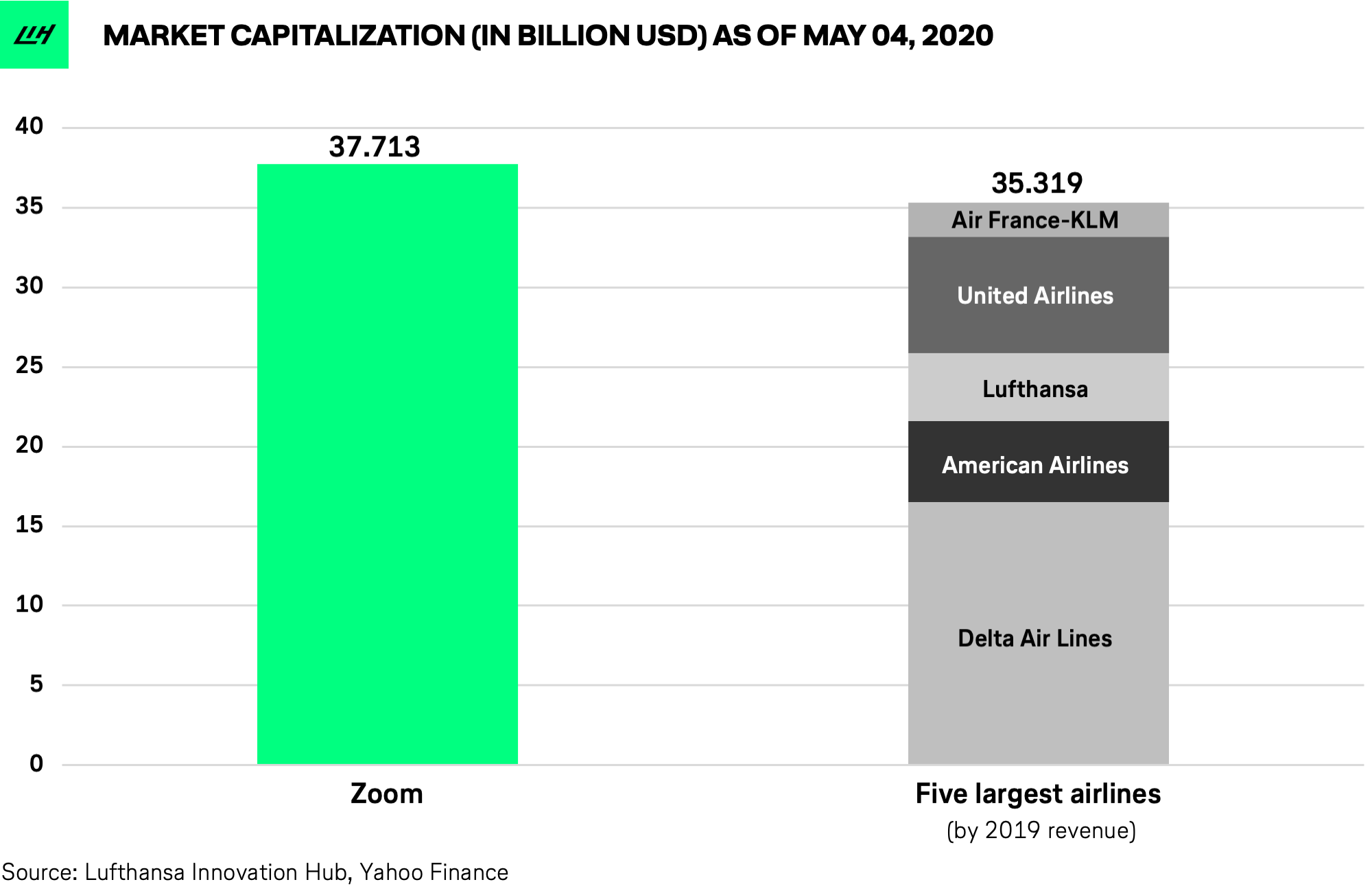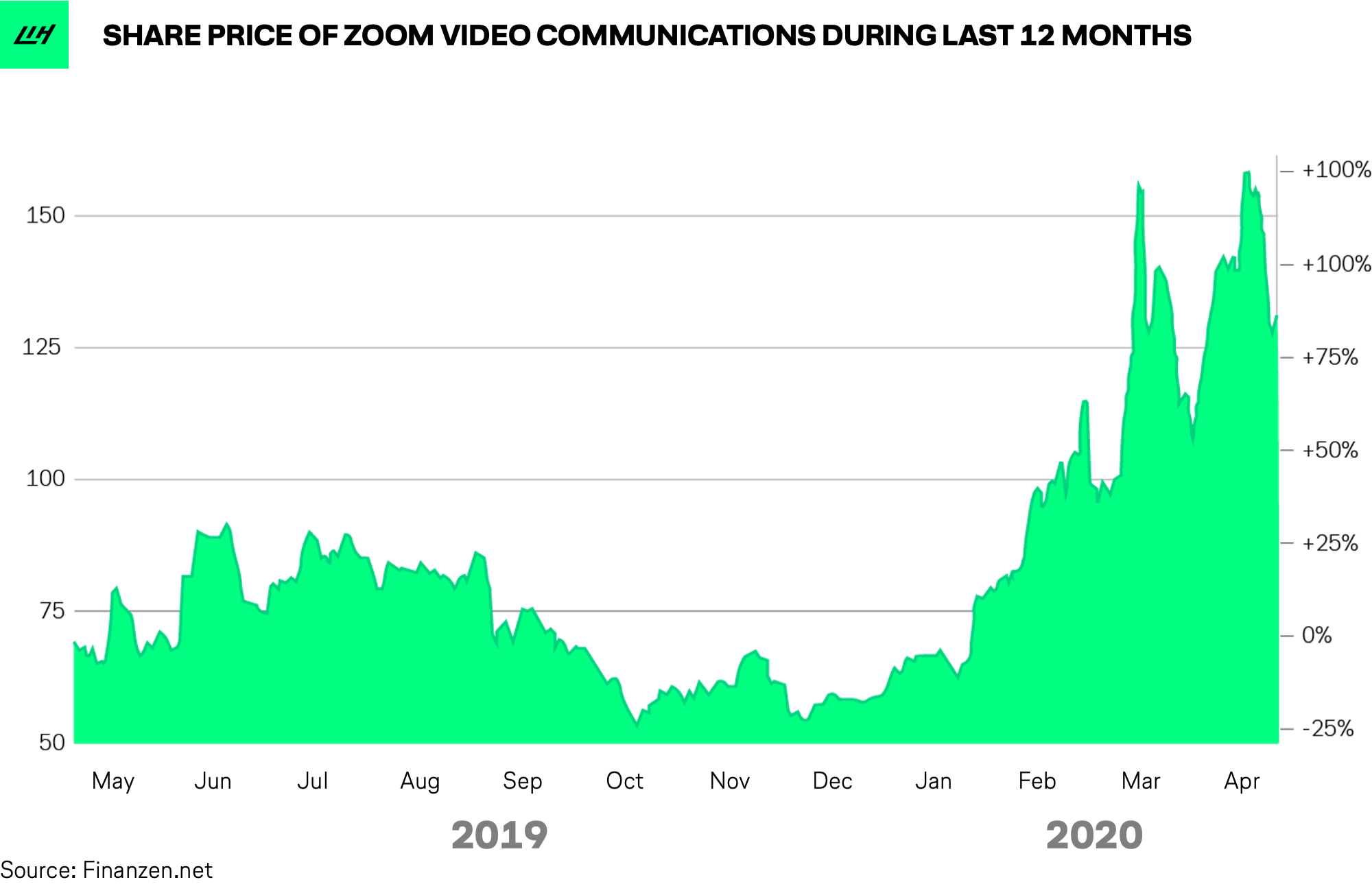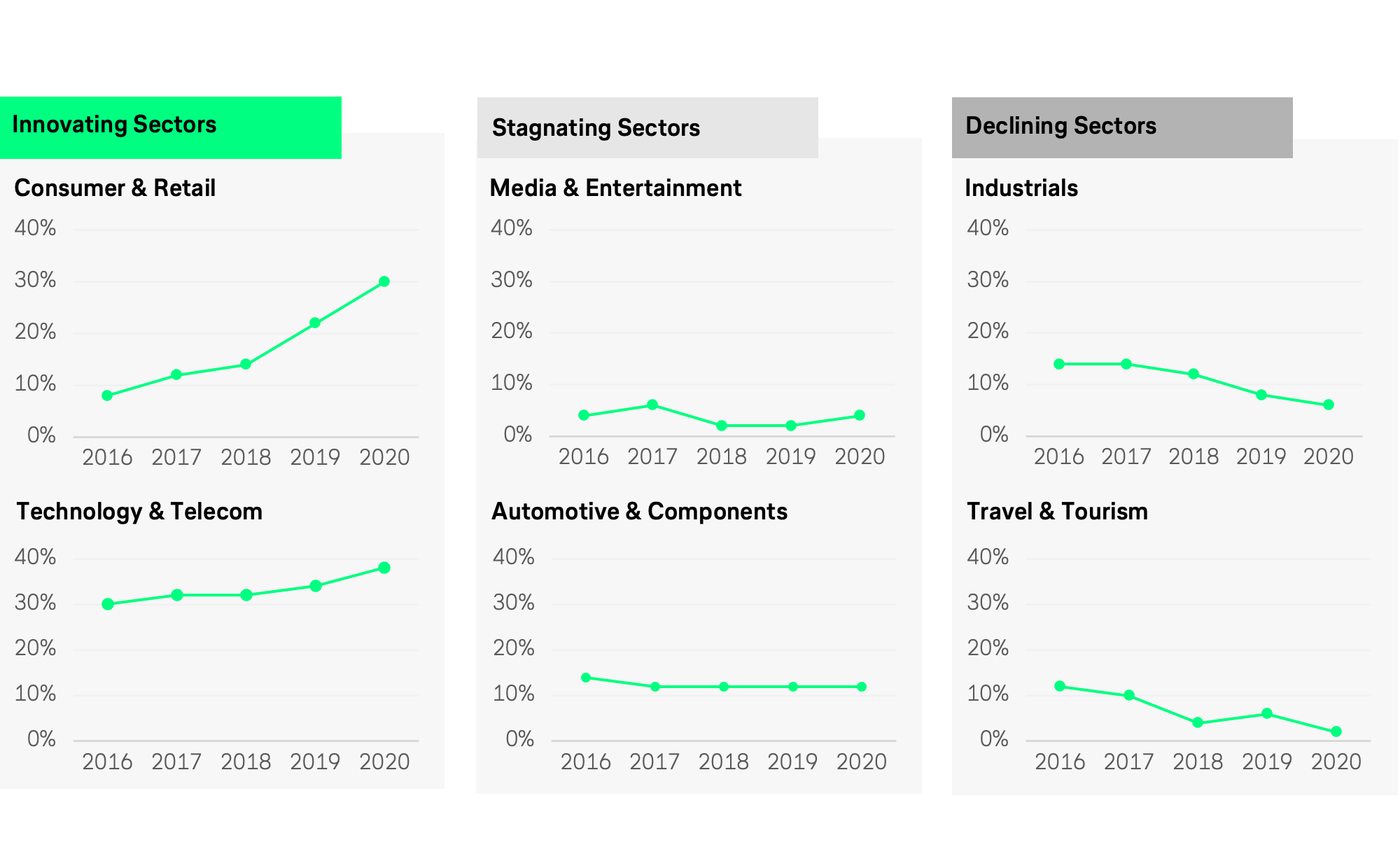The demand for teleconferencing has skyrocketed as companies around the world have gone online to stay connected while practicing social distancing. Travel, on the other hand, has come to an almost global standstill as we all know.
The statistic best describing the situation:
Zoom Video Communications, the San Jose-based video conferencing company not to be mixed up with Zoom Technologies, is now valued more than the combined market capitalization of the five largest airlines in the world.

It’s not a clean apples-to-apples comparison but the chart is still hard to wrap your head around.
For reference: Zoom’s 2019 revenue was $622 million. Total 2019 revenue of the five biggest airlines came in at close to $205 billion.
It seems like investors are increasingly betting on video conferencing to substitute a lot of business travel post-Covid. As VC veteran Fred Wilson recently put it:
„Maybe attending a meeting in person is a thing of that past and video’ing is our future.”
The bigger story: the transformation of work
No doubt about it, the world of work is transforming right before our eyes because of the Covid-19 pandemic. It actually feels like several years of digital transformation got accelerated into a couple of weeks!
From our own experience at the Lufthansa Innovation Hub, we can relate to this statement. Since late 2018, we have been promoting the case internally that “video conferencing eats business travel”. The goal was to convince our parent company to engage with startups and tech players active in the virtual-work space.
Here is our hypothesis from a power-point deck back then:
“Technology related to video communication is rapidly evolving from fragile video conferencing to frictionless holographic 3-D technology that emulates face-to-face interactions without the need for physical presence. This trend will allow individuals to interact, brainstorm, and collaborate to deliver collective results without the actual need to travel. Individual workspace pods equipped with high-end virtual-reality tools, potentially set up at major travel hubs (e.g. airports), will imitate the real-time presence allowing all interactions to be highly productive and thereby significantly reduce the need for business travel.”
We tied a 5 to 10-year timeline to this scenario for it to become a mainstream reality, unknowingly, that a global virus outbreak would soon trigger this plot a lot faster, and quite literally, squeeze years into weeks.
Now here comes the but...
Despite being a long-term believer in virtual-conferencing, I do find today’s hype around Zoom, Skype, MS Teams, and the dozens of other online meeting apps exaggerated.
Just check out Zoom’s crazy stock price rally in 2020 so far:

I find it overhyped because what most of us also realize these days is that today’s state of video-conferencing still lags behind.
As long as comments such as:
- “Can you hear me?”
- “Can you see my screen?”
- “Please unmute”
remain the most mentioned phrases during the workday, I feel like we still have a long way to go. The tech is not yet where it needs to be in order to compete with anything close to a face-to-face meeting.
As a result, I would actually bet that we will see the Zoom share price take a nosedive as soon as lockdown mode is all over (please don’t take this as any type of investment advice).
That’s why I also don’t buy into the argument that business travel is dead.
Yes, we will likely travel a lot less for work when travel bans are lifted (mostly to save costs), but video calls won’t be able to substitute critical business meetings in person – think of important deal negotiations or board meetings. I don’t see it yet. The personal element is (still) missing.
For this to become a reality, I still believe in our 5+ year timeline – and that’s probably rather optimistic.
But enough of me speculating. What do you think?
Is business travel dying out? Or is video conferencing overhyped and all those Zoom meetups will soon be a thing of the past? Let us know on Linkedin.















